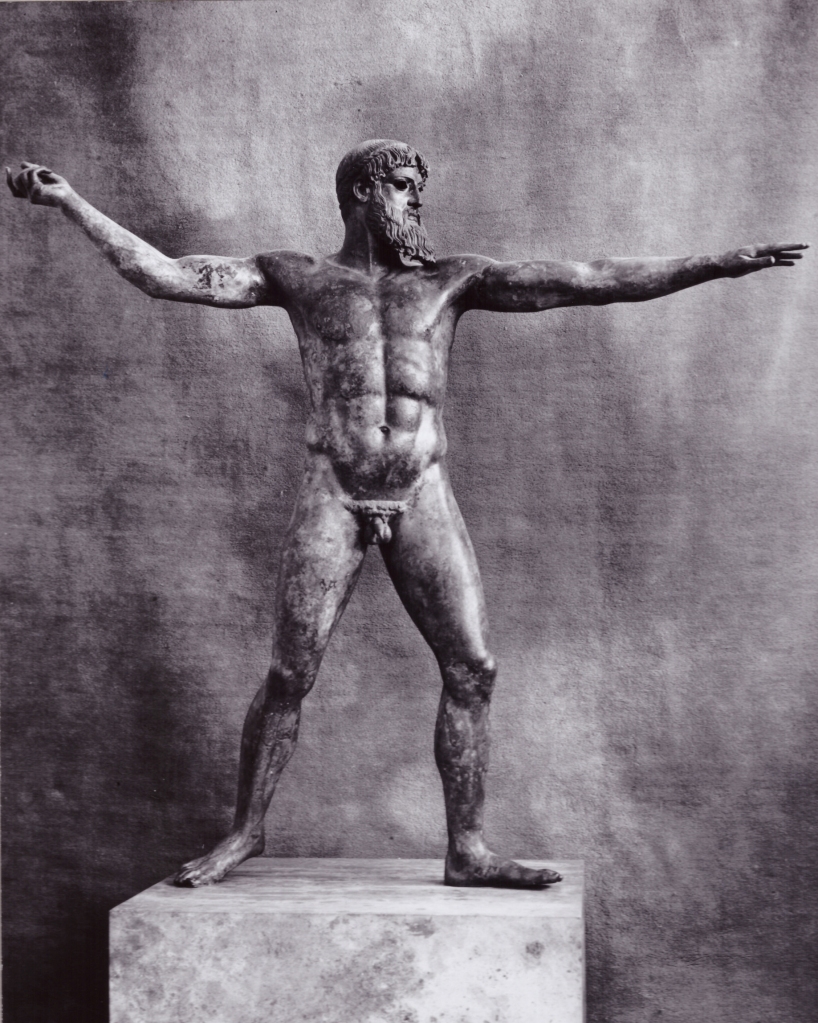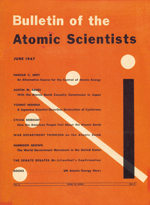The Artemision Shipwreck: Sinking Into the ASCSA Archives
Posted: October 10, 2021 Filed under: Archaeology, Archival Research, Biography, Classics, History of Archaeology, Philhellenism | Tags: Artemision Jockey and Horse, Artemision Shipwreck, Artemision Zeus, Charles H. Morgan, George Hasslacher, George Mylonas, Georgios P. Oikonomos, Γεώργιος Οικονόμος, Philip R. Allen, Sean Hemingway 7 CommentsIn late 1928 the Greek and the international press published several articles and photos of a sensational archaeological discovery: a large bronze male statue found near Cape Artemision, in the north of Euboea. On central display at the Archaeological Museum in Athens since 1930, the statue is known to the public as the Aremision Zeus (or Poseidon).

Two years before, in the same area, fishermen had caught in their nets the left arm of a bronze statue that was also transferred to the National Museum in Athens. That discovery did not, however, provoke any further archaeological exploration in the area, most likely for fiscal reasons. But then in September 1928, the local authorities in Istiaia, a town in northern Euboea, were informed of illicit activity in the sea near Artemision. Acting fast, they sailed to the spot and caught a fisherman’s boat filled with diving equipment. Not only that, its crew had already pulled out the right arm of a bronze statue. A few days later the authorities were able to bring up from the bottom of the sea a nearly complete male, larger than life, statue. The first photos showed the armless statue laying on its back on a layer of hay (Note how the area of the genitals has been conveniently darkened in the newspaper photos so that the public would not be offended by the nudity of the statue.)
Read the rest of this entry »Forgotten Friend of Skyros: Hazel Dorothy Hansen (Part I)
Posted: April 19, 2020 Filed under: Archaeology, Archival Research, Biography, Classics, Greek Folklore, History of Archaeology, Women's Studies | Tags: American School of Classical Studies at Athens, David M. Robinson, Dorothy Burr Thompson, George Mylonas, Hazel D. Hansen, Natalie Murray Gifford, Stanford University 12 Comments“Her main contribution was not destined to be in the field of excavation, but in discovering in dark cellars a good number of broken vases still covered with earth, discovered by others over the years in the island of Skyros. There she collected, cleaned, patched, and provided with a shelter transforming into a small Museum a room in the City Hall of Skyros. For this service to archaeology and the island she was made Honorary Citizen of Skyros,” wrote archaeologist George Mylonas about Hazel Hansen in early 1963, a few months after her death, in the Annual Report of the American School of Classical Studies at Athens (ASCSA or the School hereafter).
I asked several archaeologists of my generation and slightly older if her name or her association with the island of Skyros rang a bell. It did not, although she was known well enough in Greece, for her death to be noted at length in Kathimerini (December 22, 1962), one of the most respected Greek newspapers. «Ηγγέλθη χθες στην Αθήνα ο θάνατος της φιλέλληνος αρχαιολόγου καθηγητρίας του Πανεπιστημίου Στάνφορδ, Χέιζελ Χάνσεν, η οποία είναι ιδιαιτέρως γνωστή δια το σύγγραμμά της περί του αρχαιοτέρου πολιτισμού της Θεσσαλίας…”. In addition to her work in Thessaly and Skyros, the note referred to her participation in the excavations at Olynthus and on the North Slope of the Acropolis. The author of Hansen’s Greek obituary knew her well and wanted to capture the accomplishments of a friend and able colleague. It must have been (again) George Mylonas, whose friendship with Hazel started in the 1920s when they were both at the American School.

Hazel D. Hansen, 1923. ASCSA Archives, Carl W. Blegen Papers.
The Riding Goddess of Mycenae
Posted: April 2, 2018 Filed under: Archaeology, Archival Research, Biography, History of Archaeology, Mediterranean Studies | Tags: George Mylonas, Γεώργιος Μυλωνάς, Ιωάννης Παπαδημητρίου, Μυκήνες, John Papademetriou, Katherine Biddle More, Mycenae, Nikolaos Tombazis 4 Comments“In the summer of 1954, while Dr. Papademetriou and I were investigating the new Grave Circle of Mycenae, we removed the fill to the south of that circle; it proved to have been the dump of a previous excavation. Its position seems to indicate that in all probability it was made up of earth removed either by Mme Schliemann or by Tsountas from the dromos of the Tomb of Clytemnestra. Among other objects found in this earth were two carved gems, one of which bears the figure of an animal, and the other a design not only interesting for its excellence of its workmanship but also important because of the subject represented,” wrote archaeologist George Mylonas in the introduction of his book Ancient Mycenae: The Capital City of Agamemnon (Princeton 1957).

Tomb of Clytemnestra, 1953. Photo: ASCSA Archives, Katherine Biddle More Scrapbook.
The Accidental Discovery of Grave Circle B
The Tomb of Clytemnestra had been robbed by Veli Pasha, the Ottoman Governor of the Morea, in the early 19th century; he had, however, missed the dromos. Years later, in 1876, it was cleared by Sophia Schliemann, while her husband Heinrich was digging the shaft graves of Grave Circle A. The Tomb was properly excavated by Christos Tsountas in 1897, who conducted excavations at Mycenae from 1886 until 1902. After WW II, the Greek Archaeological Service undertook the restoration of the Tomb of Clytemnestra, which, by then, was falling apart and needed urgent care. The restoration, which started in the spring of 1951, was completed by the fall of that year. Read the rest of this entry »
The Spirit of St. Louis Lives in Athens, Greece
Posted: February 2, 2017 Filed under: Archaeology, Archival Research, Biography, Exhibits, Greek Folk Art, History of Archaeology, Philhellenism | Tags: Betty Grossman, George Mylonas, Lucia O' Reilly, Martyl Langsdorf, Spirit of St. Louis, Wallace Herndon Smith 3 CommentsHave you noticed that in the last ten days the press has been flooded with articles about the Doomsday Clock? Here are some of the titles: “The Doomsday Clock is the closest to midnight since 1953” (Engadget, Jan. 28, 2017), “Nuclear ‘Doomsday Clock’ ticks closest to midnight in 64 years (Reuters), “Doomsday Clock Moves Closer to Midnight, Signaling Concern Among Scientists (The New York Times, Jan. 26, 2017), and “The Doomsday Clock is now 2.5 minutes to midnight, but what does that really mean? (Science Alert).

Martyl’s design of the Doomsday Clock for the Bulletin of Atomic Scientists
The Doomsday Clock was created in 1947 by members of The Bulletin of the Atomic Scientists’s Science and Security Board; several of them were part of the “The Manhattan Project” that led to the creation of the first atomic bomb. (For those of you who want to learn more about “The Manhattan Project,” I recommend a drama series that premiered in 2014; although the series was discontinued after the second season, it featured good acting and it was fun to watch. Also see Jack Davis’s Communism In and Out of Fashion, Sept. 1, 2016.) “Originally the Clock, which hangs on a wall in The Bulletin’s office at the University of Chicago, represented an analogy for the threat of global nuclear war; however, since 2007 it has also reflected climate change and new developments in the life sciences and technology that could inflict irrevocable harm to humanity… The Clock’s original setting in 1947 was seven minutes to midnight. It has been set backward and forward 22 times since then, the smallest ever number of minutes to midnight being two in 1953, and the largest seventeen in 1991” (after Wikipedia, accessed 28/1/2017). As of January 2017 (and this explains the flurry of articles in the press), the Clock has been set at two and a half minutes to midnight, a reflection of President Trump’s comments about nuclear weapons: “The United States must greatly strengthen and expand its nuclear capability until such time as the world comes to its senses regarding nukes.” Trump posted this remark on Twitter on December 22, 2016, and followed it with an even more worrisome comment: “Let it be an arms race,” he said, referring to the Russians.
While reading the history of the Doomsday Clock my eyes happened to fall on the cover of the 1947 Bulletin of the Atomic Scientists, which featured for the first time the Clock (at seven minutes to midnight), and the name of the artist who had designed it: Martyl Langsdorf. Martyl is an unusual name, and I had seen it before. I went to the Archives Room of the American School of Classical Studies (ASCSA or the School hereafter), where we keep the School’s administrative records, and personal papers of its members. There, hanging on one of the walls, was an abstract painting depicting a mountainous landscape, and signed in the bottom left corner: “Martyl.” To my surprise, when I checked our inventory, there was a second work of art, an etching, by “Martyl” in the Archives of the ASCSA. But this one also carried a personal dedication: “To George and Lela with affection and admiration, Martyl.” This meant that Martyl’s other painting had also originally belonged to George and Lela Mylonas. Read the rest of this entry »
Tales of Olynthus: Spoken and Unspoken
Posted: October 1, 2015 Filed under: Archaeology, Archival Research, Classics, History of Archaeology, Women's Studies | Tags: Alan Kaiser, Charles H. Morgan, David M. Robinson, Eunice Stebbins, George Mylonas, Gladys Davidson Weinberg, Mary Ross Ellingson, Olynthus or Olynthos, plagiarism, Raymond Dessy, Rhys Carpenter, Richard Stillwell, Sexism, Walter Graham, Wilhelmina Van Ingen 7 CommentsIn memory of Barbara McManus (1942-2015)
In early March of 1928, David Moore Robinson (1880-1958), professor of archaeology at Johns Hopkins University, began large-scale excavations in Chalkidiki. His goal was to discover and investigate ancient Olynthus, the city that King Philip of Macedon had completely destroyed in 348 B.C. Since Olynthus had been abandoned after its destruction, Robinson was hoping to find temples, stoas, and other public buildings of the Late Classical period, without “any boring Roman stuff,” as one of the excavation participants observed. Until Robinson excavated Olynthus, the research focus of classical archaeology in Greece had been centered on the discovery of monumental public architecture and inscriptions. (For a biographical sketch of Robinson’s rich life, see https://dictionaryofarthistorians.org/robinsond.htm) Read the rest of this entry »


